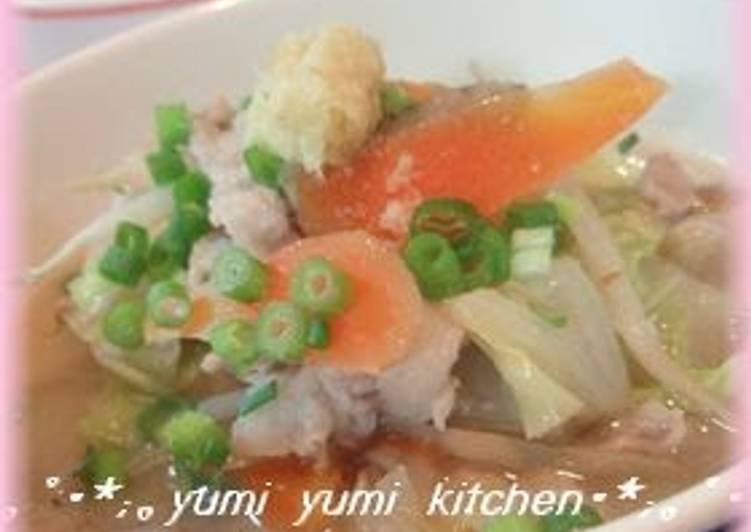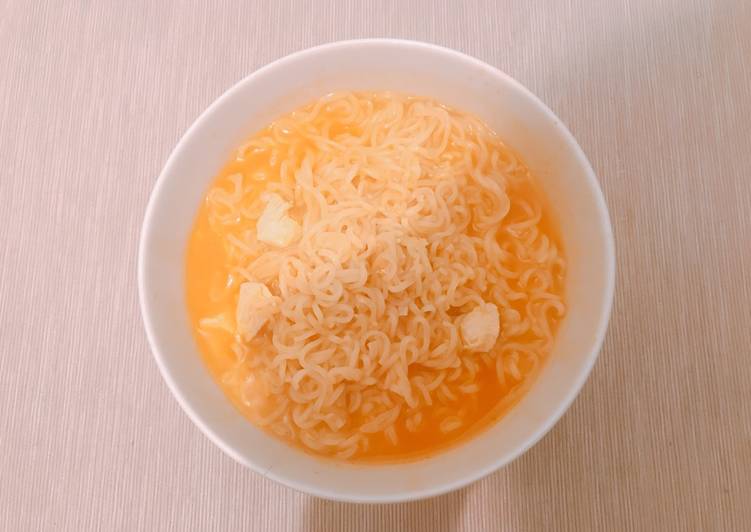
Hey everyone, hope you’re having an incredible day today. Today, I will show you a way to make a special dish, our family recipe for warming tonjiru pork soup. One of my favorites. This time, I am going to make it a bit unique. This will be really delicious.
Our Family Recipe For Warming Tonjiru Pork Soup is one of the most well liked of current trending meals in the world. It’s easy, it is fast, it tastes delicious. It’s enjoyed by millions every day. Our Family Recipe For Warming Tonjiru Pork Soup is something which I’ve loved my entire life. They are nice and they look wonderful.
Cut the pork into bite sized pieces. Pull apart the konnyaku into small pieces with your hands. Put into a pot with water and being to a boil. Add the carrot, daikon radish and mushroom and mix.
To begin with this particular recipe, we must first prepare a few components. You can cook our family recipe for warming tonjiru pork soup using 12 ingredients and 12 steps. Here is how you can achieve it.
The ingredients needed to make Our Family Recipe For Warming Tonjiru Pork Soup:
- Prepare Thinly sliced pork
- Make ready Konnyaku
- Prepare Carrot
- Prepare Burdock root
- Prepare leaves Chinese cabbage
- Make ready Bean sprouts
- Get Satoimo (taro root)
- Prepare to 100 grams ○ Miso
- Prepare ○ Sake
- Take pieces ◆ Ginger
- Get ◆ The green or white part of a Japanese leek (or green onion)
- Prepare Dashi stock (made from bonito flakes etc.)
These three vegetables add unique flavors, depth, and sweetness. Cut vegetables in the same size and similar shape - If you want chunkier texture in your soup, you can cut bigger size but make sure all the ingredients are similar in shape and size for even cooking time. Make dashi stock in a separate pan by adding enough hot water to create the soup to a sachet of dashi stock powder. Now add the dashi stock to the pan with the pork and vegetable and let it simmer.
Instructions to make Our Family Recipe For Warming Tonjiru Pork Soup:
- Wash the vegetables. Cut the pork into bite sized pieces.
- Pull apart the konnyaku into small pieces with your hands. Put into a pot with water and being to a boil. Cook for 2 minutes and drain well. Finely shave the carrot and burdock root (as if you were sharpening a pencil). Divide the cabbage leaves into the core and leaf parts, and cut up into 2cm pieces.
- Cup up the green or white part of a leek (or green onion) into thin rounds. Grate the ginger.
- Put the dashi stock, burdock root, carrot and konnyaku into a pot and turn on the heat. Simmer until tender with a lid on.
- Wash the satoimo well, put on a heatproof dish and sprinkle in 2 tablespoons of water. Cover loosely with plastic wrap and microwave for 2 minutes at 500w.
- Cool the satoimo in cold water with the skins on. Peel them, pulling off the skins with a knife. Cut up the large ones into about 3 pieces.
- When the carrot and burdock root are tender, add the core part of the cabbage and continue simmering.
- After about 5 minutes add the pork while separating it. Also add the satoimo. Simmer until the pork is cooked.
- This is homemade miso.
- Turn off the heat and dissolve in the miso. Add the sake.
- Add the leaf parts of the cabbage and the bean sprouts. Turn the heat back on.
- When the vegetables have wilted, it's done. Ladle into serving bowls and add the ginger and leek or green onion on top. Enjoy while piping hot!
Make dashi stock in a separate pan by adding enough hot water to create the soup to a sachet of dashi stock powder. Now add the dashi stock to the pan with the pork and vegetable and let it simmer. Tonjiru, also known as butajiru, translates literally to pork soup. This Japanese soup is great for a cold winter day. It will be sure to warm you up and tre.
So that’s going to wrap this up with this special food our family recipe for warming tonjiru pork soup recipe. Thank you very much for reading. I’m sure you can make this at home. There’s gonna be interesting food at home recipes coming up. Remember to bookmark this page in your browser, and share it to your family, friends and colleague. Thanks again for reading. Go on get cooking!

